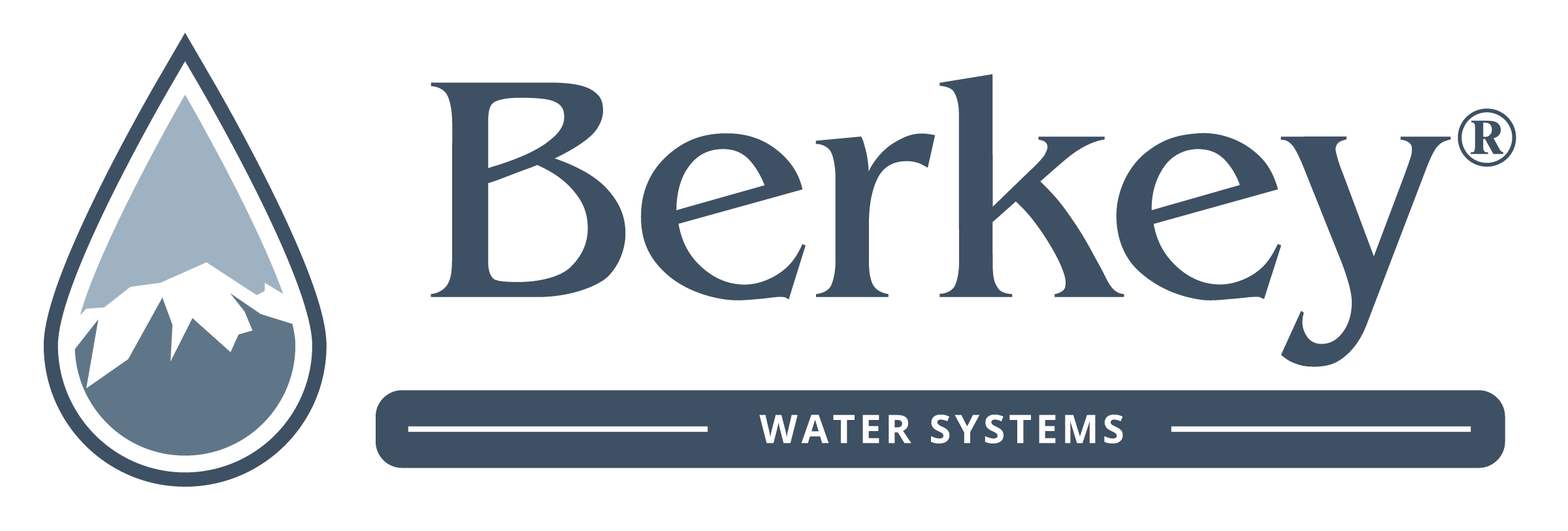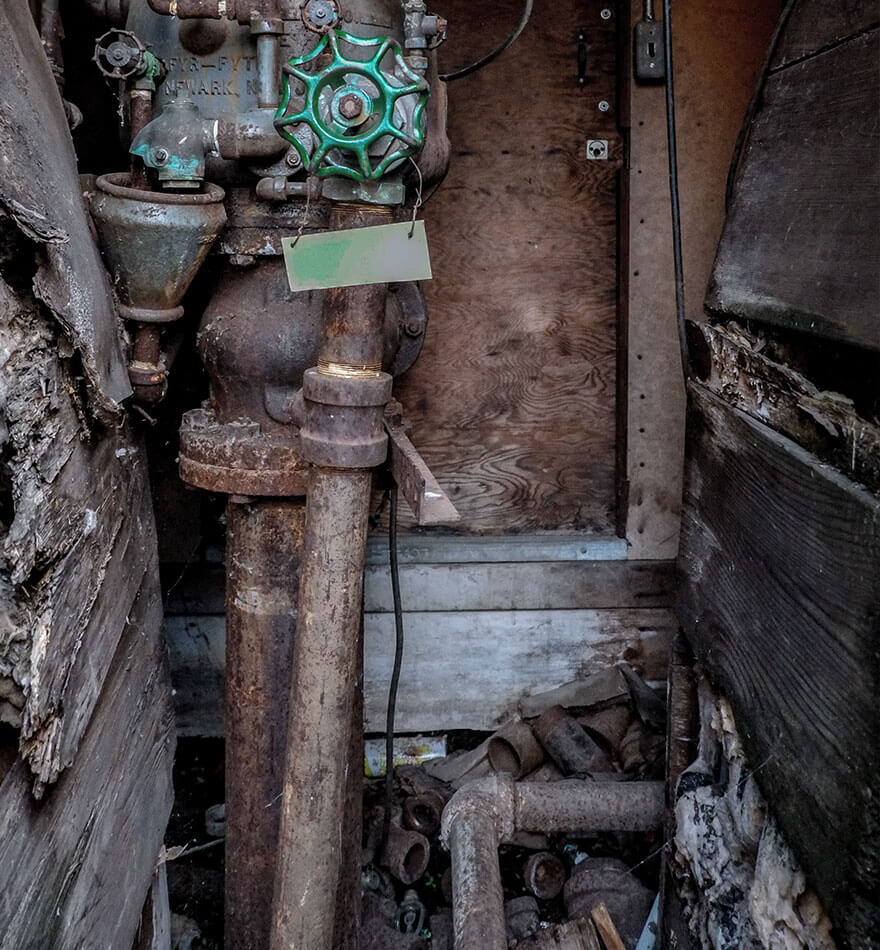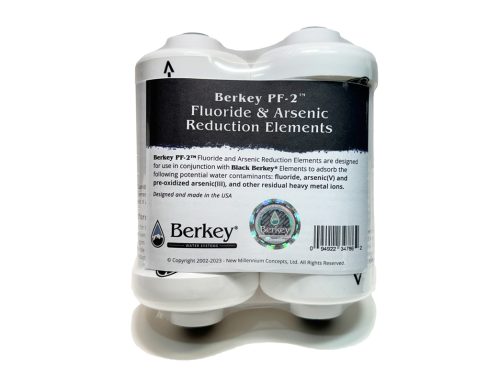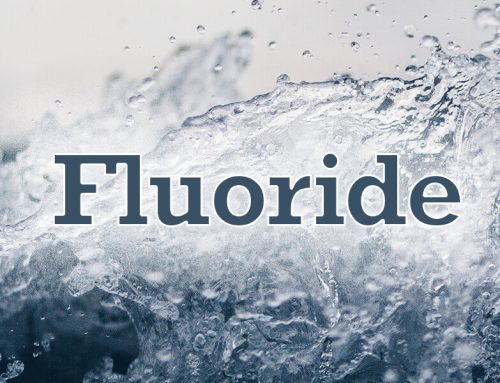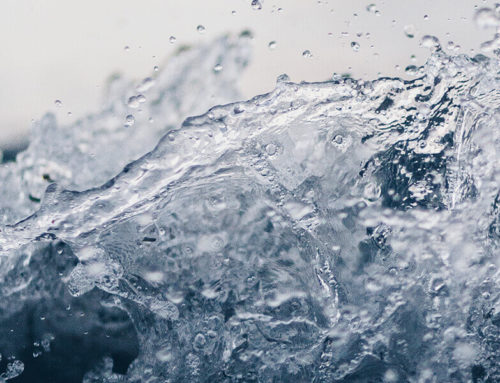It’s not easy to sort through all of the information about lead contamination. At Berkey® Water Systems, we want to help you get meaningful answers about the safety of your drinking water. Let’s look at what we know about lead and see how the Berkey® Extreme Lead Water Test can provide the protection you need.
Why Does a Lead Water Test Matter?
The most important step that you can take is to prevent lead exposure before it occurs. Having a final barrier system such as the Berkey® Water System at the point where it is used (in your home or business) is a proactive way to protect your family against lead. A final barrier system removes contaminants such as lead that are not removed through conventional water treatment processes. The Black Berkey® Elements can remove the lead concentrations in tap water by at least 99.9%.
Bottom line: The test results below outline our product’s effectiveness.
How Much Lead is Safe in Drinking Water?
Are you wondering how the EPA determines what level of lead is safe in water? To answer this question, let’s back up a little and see how these numbers were set and what they mean to you when looking at a lead water test.
- First, the EPA sets a non-enforceable maximum contaminant goal (MCLG) for lead in drinking water- this number tells you the level at which it is considered safe for lead to be present, and at which health risks will not occur. The MLCG for lead is zero, which indicates how dangerous lead is. But remember, this is a non-enforceable health goal, solely based on health risks from exposure to lead.
- The EPA then sets an enforceable standard called a maximum contaminant level (MCL), taking into account costs, benefits and the ability of public water systems to detect and remove a contaminant. However, because lead contamination of drinking water can result after the water leaves a public treatment facility and flows through corrosive plumbing material, the EPA determined that there really was no reliable method that was economically and technically reasonable to measure lead.
- Thus, the EPA established a lead action level– an enforceable procedure which public water systems must follow to ensure control of lead. The EPA’s action level for lead is 15 parts per billion (ppb, equivalent to 15 micrograms of lead per liter of water). Water companies are required to conduct sampling in a relatively small number of homes at high risk for elevated lead levels. The sampling time can vary from six months to three years. If more than than 10% of this sample has lead levels that exceed 15 ppb, then utilities are required to take remedial actions, including notifying the public, corrosion control and replacing lead pipes. As we now know from Flint and other cities, this did not happen. For more information on lead in Flint, please read this article from Natural News. And consider this: your water utility company can meet the EPA lead action level standard, when in reality there are still 9% of homes sampled with hazardous lead levels in the water.
Why the Berkey® Extreme Lead Water Test Shows It’s the Best Water Filter for Lead Removal
Your best protection against lead is to have a water filter that is rigorously tested. Not all water filters have been tested to the extreme measures that Berkey® Water Systems have.

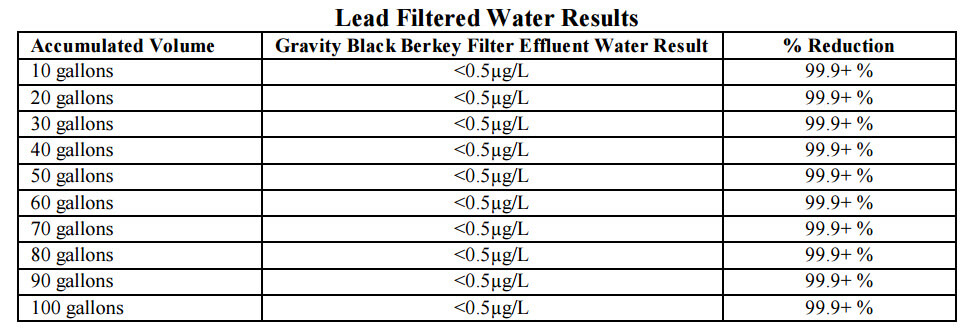

(Black Berkey® Element Laboratory Lead Water Test Results – ©2016)
What this Lead Water Test Means
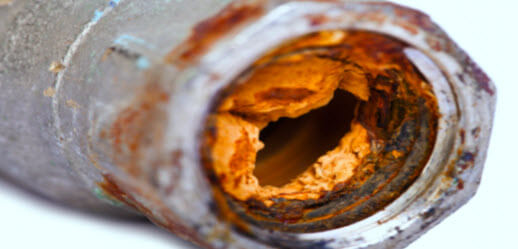 To see what would happen in an unfortunate real world crisis situation, Berkey® Water Systems contracted a lab to set the pre-filtered water concentration of lead at the extreme contamination level of one part per million (ppm)- the same lead concentrations that had been reported at some residences in Flint. At one part per million (1 ppm) the lead contamination level is about 67 times more contaminated than the EPA Lead Action Level. The above charts clearly demonstrate that Black Berkey® Elements successfully reduce lead at these excessively high contamination levels by greater than 99%. Incredibly, after 200 gallons of testing, the Black Berkey® Elements continued reducing the lead contamination by more than 99%.
To see what would happen in an unfortunate real world crisis situation, Berkey® Water Systems contracted a lab to set the pre-filtered water concentration of lead at the extreme contamination level of one part per million (ppm)- the same lead concentrations that had been reported at some residences in Flint. At one part per million (1 ppm) the lead contamination level is about 67 times more contaminated than the EPA Lead Action Level. The above charts clearly demonstrate that Black Berkey® Elements successfully reduce lead at these excessively high contamination levels by greater than 99%. Incredibly, after 200 gallons of testing, the Black Berkey® Elements continued reducing the lead contamination by more than 99%.
